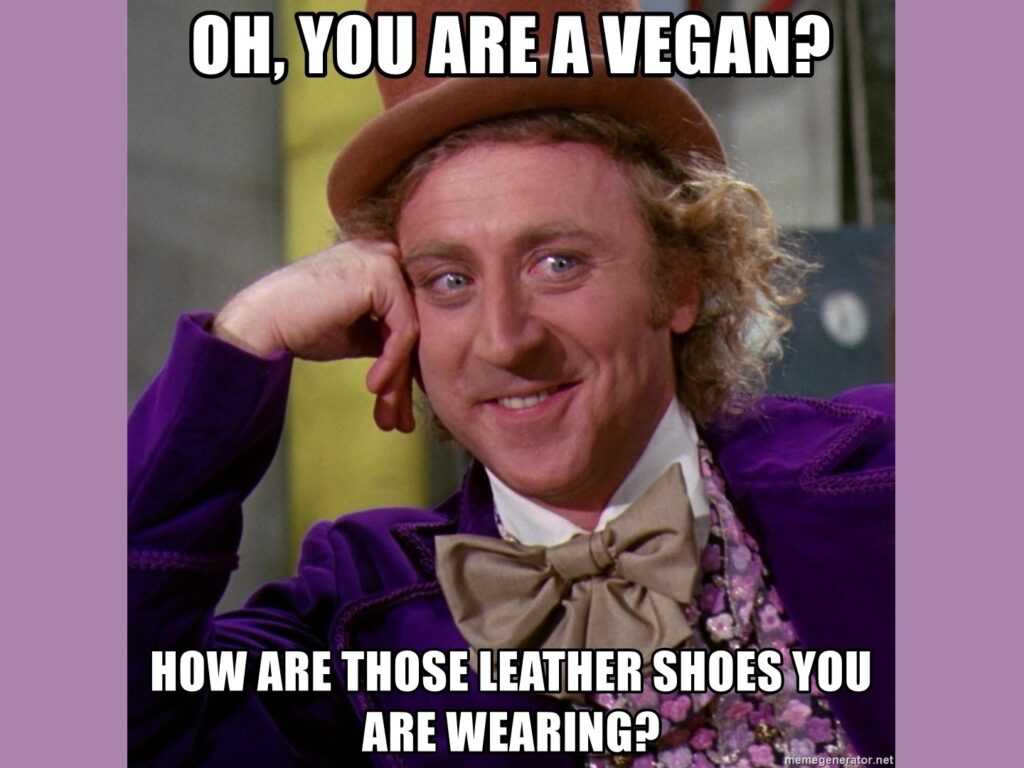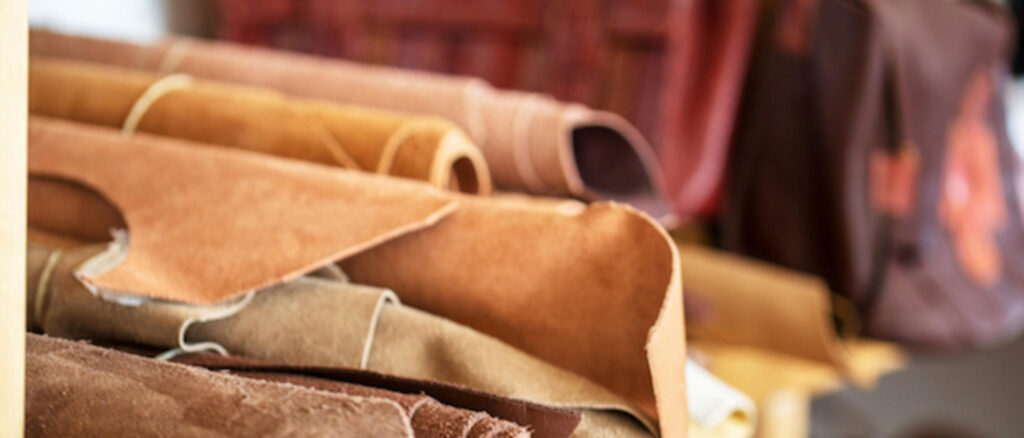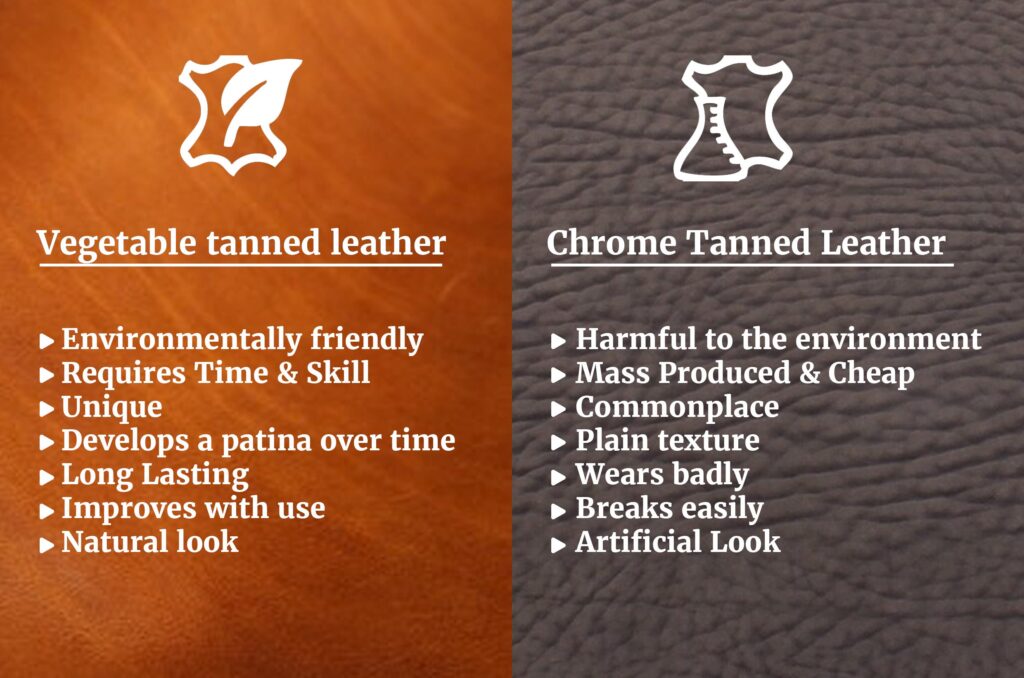I recognize the irony of following up a five-part series on Vegan January with an anniversary post touting the benefits of leather, but here we are, celebrating three years of Radical Moderate with a look at the traditional third anniversary gift. Whether you’ve been reading along since the beginning or just joining now, I am grateful that you are here, learning with me. I really do love taking the time every week to research something and write about it, and I doubt I would have kept it up for this long without a public forum of some kind and without knowing that there are people who actually read and enjoy it. So – truly – thank you for being here.
Ethical Purchasing
I recently had to buy a new pair of shoes, after putting off the decision for several years. If not for the pandemic and getting to wear pajamas and slippers almost every day since March 2020, I would have needed to buy good shoes for work long before now. I went into detail in a previous post about my decision to buy leather shoes, as well as how to properly fit and care for them so they last as long as possible.[1] After that post (and right before Christmas), my mom let me know that she would be interested in getting a nice purse from Santa – something that was ethically made and environmentally friendly… and that I know better than anyone what that entails.
I also needed a new purse, as my old, plastic Coach knock-off has been falling apart for some time, and I was anticipating a series of in-person work events in 2022 where I needed to at least look the part of a professional. So after finding a shoe company that seemed to meet a higher level of environmental standards (touting low-impact tanning that complies with Italy’s strict regulations),[2] I found a bag company that prioritizes ethical and environmental considerations in Ethiopia, where its workers are based.[3] And as it turned out, Santa’s elves outsourced their present fulfillment work for not one, but two, leather bags in my family this year.

Image credit: [4]
I have avoided purchasing leather for years, feeling like a hypocrite to support the leather industry as a vegetarian. However, as I have learned more about the alternatives, which are most commonly derived from plastic, I have turned back to this natural fiber that the human race has made use of for millennia. The tanning process is not great for anyone, but neither is the petrochemical development that serves as the basis for the vast majority of “vegan leather” products on the market today. Ultimately, consuming less of a product – buying less in the first place or buying second-hand when you can, and taking good care of your belongings so they have a long, useful life – is always your best bet when considering environmental impacts. But when I have to make a decision to buy something new, I am opting for leather, not plastic.
Leather Production
PETA lists massive amounts of ecological impacts from the production of leather, but in their calculations they include the land and water use, the methane emissions from the cows themselves, the eutrophication caused by runoff from farms, and even the massive deforestation to create cattle ranches that are all really the fault of the beef industry.[5] While it sounds like splitting hairs, the demand for beef is still through the roof, and the demand for leather is plummeting. If you’re concerned that buying a leather belt, or pair of boots, or sofa will lead to the death of cows, it won’t.
The LA Times reported in 2019 that while vegan leather was reducing demand for the genuine article, and vegan milk substitutes were reducing demand for dairy products, plant-based beef alternatives had not yet put a dent in the demand for real meat, particularly beef, of which Americans are among the world’s top consumers. Because of this imbalance in demand, the price for leather was dropping, leather processors were going out of business, and some cow hides were even going straight to the landfill, representing a horrific waste of useful material.[6]
Leather is clearly a byproduct of the beef industry, and not the other way around. The market for beef is what drives rampant deforestation, methane emissions, and so on; not leather. Blaming leather for the impacts of beef production is not an argument grounded in logic. If you do want to blame leather for environmental impacts – and do so legitimately – you need look no further than the tanning process.

Image credit: [7]
Impacts of Tanning
Tanning is the process of turning animal hides into a useable product: leather. If a hide is simply dried out and not tanned, it becomes rawhide, which is incredibly tough, but not useful for many applications or aesthetically pleasing. Tanning helps the hide become more durable, somewhat water resistant, longer-lasting, attractive, and – depending on the process used – even flexible and soft. There is evidence of tanning as early as 7000-3300 BC in what is now Pakistan.[8]
The traditional method, called “vegetable tanning,” uses tannins (acidic chemical compounds, from which the process gets its name) derived most commonly from tree bark, but can also use seeds, leaves, and other natural materials that create unique end products. Vegetable tannins were replaced by chromium sulfate during the Industrial Revolution in the 1800s. Chrome tanning is cheaper than vegetable tanning, takes significantly less time (about a day, rather than weeks) and produces a more stretchable, flexible leather. This process represents 75-90% of tanning done today, depending on whom you ask.
Concerns about worker health and environmental impacts abound with regard to chrome tanning, but that doesn’t mean vegetable tanning is altogether safe. Tanning is a dirty, dangerous process, and it always has been. A friend of mine who does historical brewing research found an account of a Dutch brewery in the middle ages that sued a tannery located upstream for fouling their water source and making their patrons sick. Because of the risk of air and water contamination, tanneries have generally been located in areas that limit their impact on public health.[9]
That being said, in countries responsible for much of the world’s leather production, such as Mexico, Brazil, China, Argentina, India, and Pakistan, environmental regulations do not always exist, and even when they do, they are not always enforced. There are frequent accounts of unsafe conditions for workers and of untreated tanning effluent being released into waterways and contaminating local ecosystems, impacting wildlife, farm animals, and residents. One study showed increased risks for various types of cancers, including lung, testicular, pancreatic, and bladder cancers, as well as soft tissue sarcoma among tannery workers.[10]

Making Choices
I like to be certain that I’m making reasonably informed decisions. I like very much to have some level of certainty if anyone is going to listen to what I have to say on a given subject and even base decisions off of that information. The general lack of specific detail offered by merchants and the high level of conflicting reports from arguably subjective sources were both cause for frustration as I was researching and writing this post.
Merchants selling “eco-friendly” leather tout the environmental benefits of vegetable tanning,[12] while a reforestation advocate warns of increased ecological impacts brought on by growing demand for vegetable tanned leather.[13] A leather trade association says that there is no significant difference in environmental impact between vegetable tanning and chrome tanning when all variables are considered (an important caveat),[14] while international reports demonstrate that chrome tanning continues to harm workers and nearby communities.[15] I would love to say with some level of certainty that vegetable tanning is a better choice, but all I can say is that it’s still not great.
As excited as I was to find seemingly thoughtful, responsible companies to patronize with my recent shoe and purse purchases, all I could do in the end was take their word for it. In the case of American Duchess, they source their leather from Italy, which has to comply with strict effluent standards. In the case of Parker Clay, they work with small leather producers in Ethiopia who use the same techniques that have been used for generations, which purport to be low impact. That’s promising information on both fronts, but I’d still prefer more transparency.
The best way forward I could find for now is the UN’s Leather Working Group, which audits the operations of leather manufacturers and suppliers around the world and rates them based on responsible business practices.[16] There are limitations to this process, specifically that not every company may choose to get certified (they may have responsible practices if they’re not on the list, but there’s no guarantee). Additionally, not every product vendor may be transparent about who their leather suppliers are, limiting customers’ ability to do their own research. It is a step in the right direction, though. What I will probably do in the future is – before buying – ask if a vendor’s leather is LWG certified.

Image credit: [17]
Once again, I am glad you are here on this journey with me. Let me know if anything here surprised you or if there are things you’d like to know more about.
Thanks for reading!
[1] https://radicalmoderate.online/sole-mates-part-1/
[2] https://www.americanduchess.com/
[3] https://www.parkerclay.com/
[4] https://memegenerator.net/instance/62272891/willy-wonka-oh-you-are-a-vegan-how-are-those-leather-shoes-you-are-wearing
[5] https://www.peta.org/issues/animals-used-for-clothing/leather-industry/leather-environmental-hazards/
[6] https://www.latimes.com/business/story/2019-08-18/america-is-obsessed-with-beef-but-it-has-no-use-for-hides-so-leather-prices-plunge
[7] https://federallabs.org/successes/success-stories/leather-tanning-research
[8] https://en.wikipedia.org/wiki/Tanning_(leather)
[9] https://aethelmearcgazette.com/2018/08/22/in-the-middle-ages-you-drank-beer-if-you-could-afford-it/
[10] https://www.ncbi.nlm.nih.gov/pmc/articles/PMC3168109/
[11] https://www.bcorporation.net/en-us/find-a-b-corp/company/parker-clay/
[12] https://natural-nuance.com/blogs/news/chrome-tanned-leather-vs-vegetable-tanned-leather-in-fashion
[13] https://www.prnewswire.com/news-releases/vegetable-tanned-leather-could-cause-devastating-environmental-effects-and-lead-to-future-pandemics-it-is-not-safer-or-eco-friendly-as-many-leather-companies-imply-301079104.html
[14] https://www.leathernaturally.org/Education/Fact-Sheets/Manufacturing/Summary-of-the-different-types-of-tanning
[15] https://gizmodo.com/how-leather-is-slowly-killing-the-people-and-places-tha-1572678618
[16] https://www.leatherworkinggroup.com/who-we-are/about-us
[17] https://www.axesswallets.com/pages/vegetable-tanned-leather-vs-chrome-tanned-leather
0 Comments